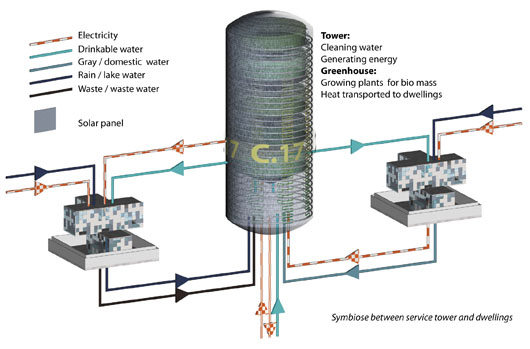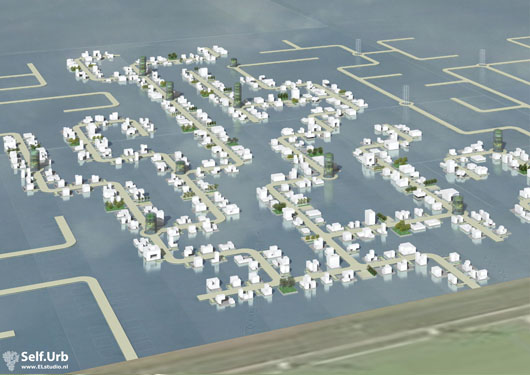Th project Self.Urb focuses on the possibility of building extensively over water, tackling the rising sea level problem, environmentally. It creates a ‘floating city’
FINALIST in the 2nd Advanced Architecture Contest
WINNER in the World Architecture Community Awards 2009
Self.Urb defines a system that intertwines the urban context with self-sustainable, prefab dwellings. Self.Urb uses computer algorithms to define a global strategy that goes from predicting the development of urban planning to maximizing the sustainability of the plan, to designing, assembling, and placing the dwellings.
Computer-generated pier landscape (6 generations).
Urban Flexibility; This proposal aims to explore the potential of water surfaces for flexible urban development. The project consists of a pier landscape connected to the mainland, accessible both by car and by boat. The pier network is the support for prefabricated housing modules, which are plugged into its connection points. The pier network is generated by a computer script, assuring the circulation of floating traffic in the present and the future, which is important in order to place and remove the prefabricated units. Because of this parametric approach, which defines the basic rules of development, urban growth becomes flexible: it can occur at different times and places. This adaptability makes the floating city more sustainable than average sedentary cities since it can in/decrease as well as recycle its program.

Sustainability; The sustainability of this plan is based on two interrelated systems: it combines self-sufficient housing and a decentralized network of service towers. These towers back the vital functions of the dwellings, in case of a shortage they provide energy or drinking water, and in case the dwellings produce too much, they take the overflow.
Dwelling units; Each floating house consists of two main elements: the concrete basin and the housing unit. The concrete basin is prefabricated as a whole and most of the technical needs are located here.
The housing unit is composed of prefabricated elements that help maximize the production, and minimize the consumption, of energy. These elements are solar, ventilation, glass, and wood panels. The layout of the facades is generated by a computer algorithm that defines the percentage and the location of each of these elements, in accordance with the expected performance and orientation of each facade.

Symbiose between tower and dwellings.
